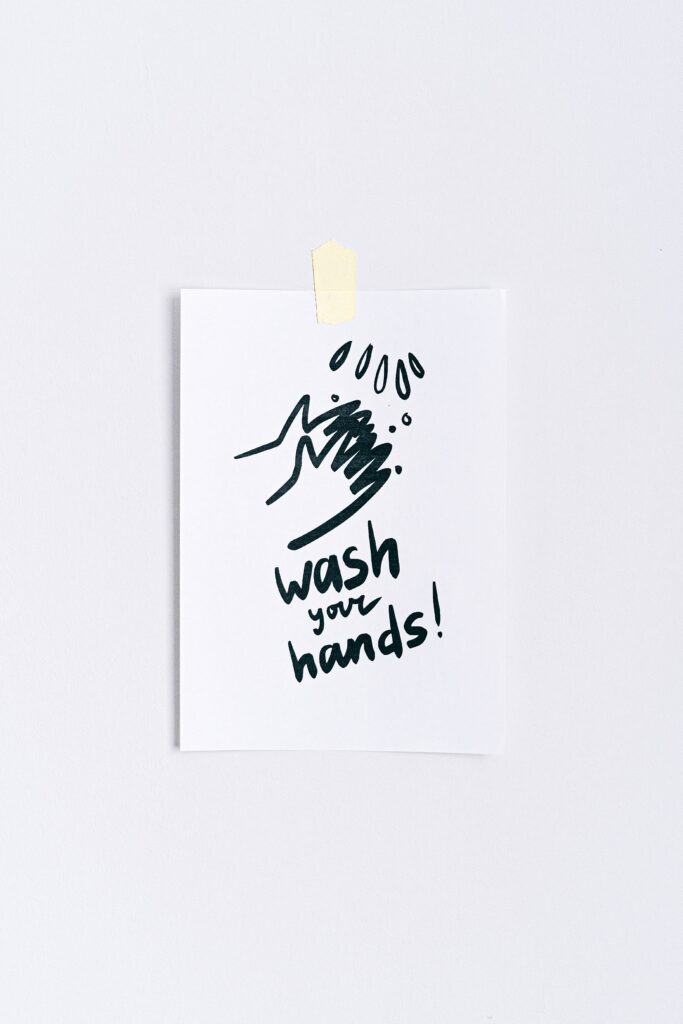Toilet-training, or potty-training in some cultures, for kids is always challenging for parents. When it comes to training kids with autism, this challenge piles mountains. Autistic children are less responsive and learn with a little delay compared to normal children.
Because of the abnormal brain structure and functions, children with autism often have behavioral disturbances. Aside from that, they face difficulties in social interaction, non-verbal communication, eye contact, flat speech, etc.
The fact that there are numerous subtypes of autism, most of which are influenced by a mix of genetic and environmental variables, is well known. Each autistic person has a unique set of abilities and difficulties because autism is a spectrum condition. Autism can affect a person’s ability to learn, reason, and solve problems in a variety of ways, from well-developed to severely handicapped. Some persons with ASD might need a lot of everyday assistance, while others might only need a little help or even be completely independent in specific circumstances. (1)
Several factors may influence the onset of autism; it is frequently accompanied by sensory sensitivity, physical problems including gastrointestinal (GI) diseases, seizures, or sleep disorders, as well as psychological difficulties like anxiety, depression, and attention problems. (1)
Autism symptoms typically start to show by age 2 or 3. Even earlier signs of some linked developmental delays are possible, and they are frequently identified as early as 18 months. According to research, people with autism benefit later in life from early intervention. (1)
Why is it more difficult to potty train kids with autism? Some of the common problems that every parent encounters are:
1. The kid is impatient to sit on the toilet for longer.
2. Some have an excessive interest in flushing repeatedly.
3. Some kids with autism fear flushing the toilet after use.
4. They tend to play with toilet paper or water.
5. The children panic when they touch dirty things.
6. Some kids don’t want to clean up.
7. Failure to communicate about constipation or irregular bowel movements.
When you toilet-train any kids with autism, then you may encounter some more problems. To know more about these problems, click here.
Autism has five main variants in kids. These are:
1. Asperger’s syndrome (AS)
The developmental disorder Asperger’s syndrome, often called Asperger’s disorder, has an impact on behavior, communication, and social interaction. It is regarded as a subtype of autism spectrum disorder (ASD), a group of developmental disorders with resemblances in its symptoms.
Individuals with Asperger’s syndrome may struggle with social skills like continuing conversations, maintaining eye contact, and comprehending nonverbal clues. Moreover, they could display repeated behaviors, have a limited variety of interests, and struggle with change. Nonetheless, the IQ and language development of those with Asperger’s syndrome are often normal to above average. (2)
The Diagnostic and Statistical Manual of Mental Disorders (DSM-5) is the accepted classification system for mental disorders used by mental health practitioners in the United States. It no longer includes the diagnosis of Asperger’s syndrome. Instead, people who would have been given an Asperger’s syndrome diagnosis may now be given an autism spectrum disorder (ASD) diagnosis, whether or not a corresponding intellectual or linguistic impairment is present.
2. Rett syndrome
Rett syndrome is a rare hereditary condition that impairs brain growth and causes significant physical and mental impairments. It primarily affects females and is brought on by a MECP2 gene mutation. (3) Boys with similar situation typically dies shortly after birth. (4)
Infants with Rett syndrome often develop normally for the first six to 18 months of life. But, after that, they start to display signs like slower head growth, a loss of intentional hand movements, and a deterioration in communication and social skills. Moreover, they could experience scoliosis, seizures, abnormal breathing patterns, and repetitive hand movements. (3)
Clinical signs and symptoms, genetic tests, and occasionally brain imaging are used to diagnose Rett syndrome. There is no known cure for Rett syndrome; however, it is treated with supportive measures that are aimed at symptom management, such as seizure medication, physical therapy to help with movement, and communication aids to improve language development. (4)
It is significant to remember that 1 in 10,000 to 15,000 females have Rett syndrome, which is a rare illness. For a more thorough assessment and direction, it is advised that you or someone you know speak with a healthcare professional if you or they have concerns regarding Rett syndrome.
3. Pervasive development disorder (PDD)
Pervasive Developmental Disorder (PDD) is the name given to a group of disorders that are characterized by delays in socialization and communication, the presence of repetitive activities, and the limitation of interests. Autism, Asperger’s syndrome, Rett syndrome, and childhood disintegrative disorder are just a few of the illnesses that fall under the PDD umbrella. (5)
Yet since the release of the Diagnostic and Statistical Manual of Mental Disorders, Fifth Edition (DSM-5), the acronym PDD has been abandoned as a diagnostic classification. These illnesses are now included under the more inclusive label Autism Spectrum Disorder (ASD). (6)
There is disagreement among physicians regarding the use of the name PDD; since PDD-NOS (pervasive developmental disorder not otherwise specified) is still frequently abbreviated as “PDD” by few. Some avoid diagnosing extremely young children with a particular type of PDD, such autism, by using the general category name of PDD. Due to the fact that it is no longer a diagnostic label but rather a collection of illnesses – both approaches add to the term’s confusion. (7)
4. Childhood disintegrative disorder (CDD)
The rare developmental illness known as Childhood Disintegrative Disorder (CDD) is characterized by a considerable regress in several developmental domains following a period of normal growth. Generally, children with CDD exhibit typical development in areas like language, social skills, and play until they are between the ages of 2 and 4, at which point they suffer a severe loss in these abilities. (8)
Children with CDD may experience severe regression, during which they may lose their ability to communicate, play, interact socially, and care for themselves. They may also exhibit repetitive behaviors and lose interest in their environment. Seizures may also appear occasionally. (8)
According to the Diagnostic and Statistical Manual of Mental Disorders, Fifth Edition, CDD is a component in the diagnosis of autism spectrum disorder (ASD) (DSM-5). It is regarded as a rare condition, and it is not entirely clear what causes it. Usually, a diagnosis is made after a thorough evaluation that considers observation, developmental history, and standardized testing. (9)
5. Kanner’s syndrome
Communication and social interaction issues, as well as the prevalence of repetitive or stereotypical actions and interests, are characteristics of this condition.
Children with Kanner’s syndrome frequently exhibit symptoms before the age of three, and they may struggle with language development, social skills, and imaginative play. Moreover, they could display repetitive behaviors like lining up things or waving their hands and sensory sensitivity. (10)
The main goals of Kanner’s syndrome and ASD treatment are to encourage development, control symptoms, and enhance the quality of life. This could involve family support services, behavioral therapy, assistance with education, medicine for accompanying symptoms, and so on. For children with Kanner’s syndrome and other types of ASD, early intervention is frequently advised in order to maximize results. (11)
Most children develop cognitive behavior within their first 2 to 3 years. However, children with autism require more time than other children. It is better not to push them hard for anything. What you perceive to be little is more for any autistic child.
Toilet Training Plan for Autistic Kids
The toilet training plan may not sound good, but it is important for any child with autism. You have to plan well and keep up your patience levels to win this mission. Let’s follow some common strategies step by step.
1. Visual Training
Visual training can be an essential therapy component for autistic children, as many individuals with autism spectrum disorder (ASD) have visual processing and learning strengths. Visual training can support language development, social communication, and adaptive skills. It is the best effective option to teach any child. Kids are generally more accepting of visual perception. They can gather more memory to remember the command and follow whatever your train.
Using visual cue cards or timetables to facilitate transitions and routines, as well as visual supports like symbols or drawings, are some examples of visual training strategies for autistic children. You can label some lines on colorful photographs. These could be “Wash hands,” “flush the toilet,” “Wipe with toilet paper,” etc. Now put them in order and teach him to step by step. Make sure you are not making it more complex than it has to be.
Integrating some cartoon characters would make it more exciting and acceptable for autistic kids. Try to make it fun. This will help naturally develop his or her learning.
2. Buy helping tool for kids
In order to succeed in the visual training, you can buy an extra tool for your kids. General toilet seats and sinks are much higher for any kids under 5 years. So it is obvious if you are trying to train your kids for toilet or for washing hand in sinks you need few extra inch support systems for them.
Consequently, it will be appropriate if you buy toddler step stool to help your kids to reach the destination by their self. A step stool might make an autistic child feel more at ease and secure when using the restroom. Also, if they are shorter in stature, it may be easier for them to use the restroom.
There are frames that can be installed around a toilet to give kids who have trouble sitting or standing more stability and support. Children who struggle with balance or coordination can benefit the most from them.
This simple stool gives them confidence and capable them to practice visual training more effectively.
3. Diaper to Underwear
How long does a kid need diapers? Well, most parents continue to use diapers even after the first two years because it is hassle-free to clean him up and they don’t have to think about midnight pee whisking.
Even though they may start potty training late, most kids can absorb words quickly. However, autistic kids need more time to understand everything, and starting late does not help. Because of the late switch to diapers, he or she will face difficulty in developing the sensation about toileting.
What happens when he switches from diapers to underwear? There will be some accidents. That wet agitation will create discomfort on the child’s skin. He will cry and try to find a better alternative. Being a trainer, you have to use this stimulus to help train him for proper toileting habits.
4. Keep Patience
As mentioned earlier, autistic children can be slow in learning new things, so there is a good possibility that he will repeat the same mistake and you have to clean him up again and again. That can surely be frustrating, but you have to stay patient.
Let him realize his mistake. Keep reminding him about toileting. Show the pictures of step one and most importantly do not scold on his mistakes. Good behavior is half of the training. He must feel comfortable and friendly to believe and trust you.
5. Give Him Rewards
Pay attention to his attempts to use the toilet. Give him rewards on every good attempt. These rewards will motivate him and try to accelerate his learning. A good reward can be anything that makes him happy. It can be cartoons, toys, chocolates, flowers, or anything else the child enjoys.
Children with autism may respond well to positive reinforcement as a toilet training method. To track their progress and receive incentives for successful potty use, the child can utilize a reinforcement chart that you can make.
Make a good reserve of his reward and make him realize if he can do it again, you will give him more. Also, it is important to reward him as soon as he completes the task. Furthermore, you can draw both pictures of rewards and toilets and collage them or make an arrow in between them. Show him this picture for a better understanding of this reward process.
6. Focus on Communication
The child must communicate with you for his urge to make natural calls. He must develop the sensation of a full bladder and compulsion to empty it. Even if he does everything right, poor communication can doom the entire training.
If it is a non-verbal autistic child or a child with speech problems, then you may have to teach him finger signs. A child having both speech and hearing problems needs another way of communication. Clip a picture of the toilet to his shirt buttons and teach him to point on it whenever he feels the urge to go to the bathroom.
Nowadays you will find more advanced assisted communication devices for special children with different pictures with audible sounds to help them communicate. He just needs to select a picture and press on it. The audible sound will signal you to his toileting impulse.
7. Try Professional Therapist
When all your hard work and patience seems to have been all in vain, then this is your last hope. Find a personalized autistic child therapist. They are masters in behaviors that stem from autism and know exactly how to deal with autistic children.
Though it is costly, they will train him and customize his behavior. However, you must not leave him just for the therapist to train or work with. He must know you are always there for him. You must be compassionate about his training.
Other than that, an autistic child builds more love and affection for people who stay with them longer. So leaving him to a therapist completely can send him negative signals about you. He may not accept you like before. Even if you try a professional therapist, do stick with the child and motivate him while training.
Final Thoughts
Training autistic children for successful toileting is not impossible. You just need to maintain good strategies and patience. Keep repeating until you reach your goal. There are hundreds of people who already found success in potty training their child, and there is no single reason that you can’t. You must believe and keep trying for success.
References
(1) https://www.autismspeaks.org/what-autism
(2) “F84.5 Asperger syndrome”. World Health Organization. 2015. Archived from the original on 2 November 2015. Retrieved 13 March 2016.
(3) “Rett syndrome”. Genetics Home Reference. December 2013. Archived from the original on 14 October 2017. Retrieved 14 October 2017.
(4) “Rett Syndrome Fact Sheet”. National Institute of Neurological Disorders and Stroke. Archived from the original on 14 October 2017. Retrieved 14 October 2017.
(5) Lord C, Cook EH, Leventhal BL, Amaral DG (2000). “Autism spectrum disorders”. Neuron. 28 (2): 355–63. doi:10.1016/S0896-6273(00)00115-X. PMID 11144346. S2CID 7100507.
(6) Posar, Annio; Resca, Federica; Visconti, Paola (2015). “Autism according to diagnostic and statistical manual of mental disorders 5(th) edition: The need for further improvements”. Journal of Pediatric Neurosciences. 10 (2): 146–148. doi:10.4103/1817-1745.159195. ISSN 1817-1745. PMC 4489060. PMID 26167220.
(7) National Dissemination Center for Children with Disabilities (NICHCY) (October 2003) Disability Info: Pervasive Developmental Disorders (FS20). Archived 2008-03-09 at the Wayback Machine Fact Sheet 20 (FS20)
(8) Rogers SJ (2004). “Developmental regression in autism spectrum disorders”. Ment Retard Dev Disabil Res Rev. 10 (2): 139–43. doi:10.1002/mrdd.20027. PMID 15362172.
(9) Malhotra S, Gupta N (December 1999). “Childhood disintegrative disorder”. J Autism Dev Disord. 29 (6): 491–8. doi:10.1023/A:1022247903401. PMID 10638461. S2CID 189899310.
(10) Rogers SJ (June 2009). “What are infant siblings teaching us about autism in infancy?”. Autism Research. 2 (3): 125–137. doi:10.1002/aur.81. PMC 2791538. PMID 19582867.
(11) Sigman M, Spence SJ, Wang AT (2006). “Autism from developmental and neuropsychological perspectives”. Annual Review of Clinical Psychology. 2: 327–355. doi:10.1146/annurev.clinpsy.2.022305.095210. PMID 17716073.





